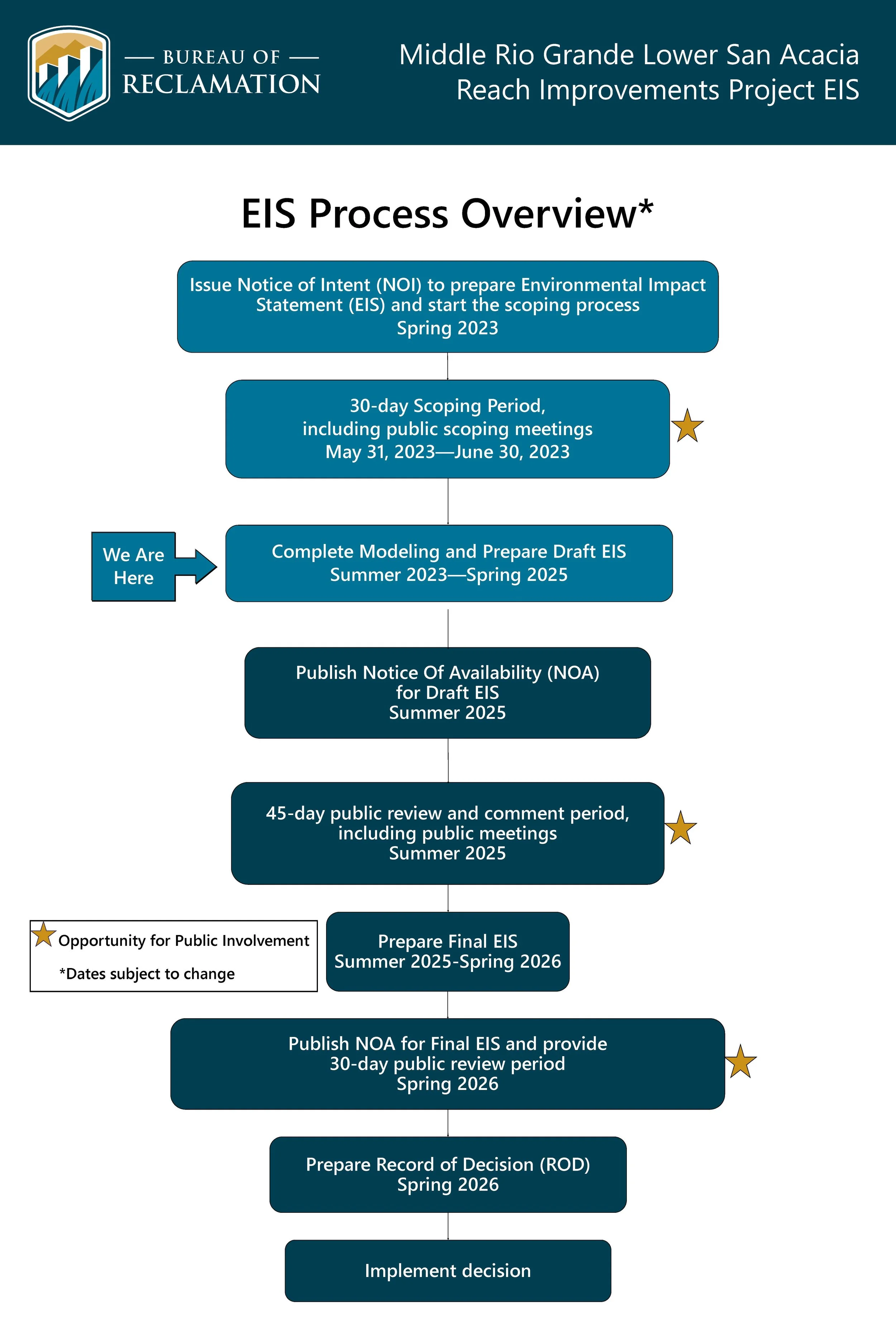
Middle Rio Grande Lower San Acacia Reach Improvements Project Environmental Impact Statement
NEPA and Public Involvement
Photo credit: Bureau of Reclamation
NEPA and the Scoping Process
NEPA requires that federal agencies engage the public during preparation of an EIS. Scoping is the process that continues throughout the planning and early stages of EIS preparation. Agencies use scoping to engage various stakeholders, including state, local, and Tribal governments and the public in the early identification of affected resources, issues to be considered, and potential alternatives.
Scoping Update
Reclamation met with attendees at in-person public meetings in Albuquerque, Socorro, and Truth or Consequences, NM on June 20, 21, and 22, 2023, respectively. During the scoping period, Reclamation received 14 written comment submissions covering various topics, including the purpose of and need for the project, the range of design alternatives, and resources such as hydrology, special status species, groundwater, geology and soils, and fish and wildlife.
Several commenters asked Reclamation to consider the fundamental importance of protection and recovery of endangered species. Some commenters also provided suggestions for components of alternatives, such as removing historic infrastructure. Other commenters requested additional clarification on the fate of the Low Flow Conveyance Channel.
Thank you to everyone who spent time attending the public meetings and writing meaningful comments. All substantive comments will be considered in drafting the EIS.
For more information on the Middle Rio Grande Lower San Acacia Reach Improvements Project (LSARI) Environmental Impact Statement, please contact Ashlee Rudolph, Project Manager (bor-sha-aao-lsari@usbr.gov).
To be added to or removed from the mailing list, please contact Val Stanson (val.stanson@empsi.com).


